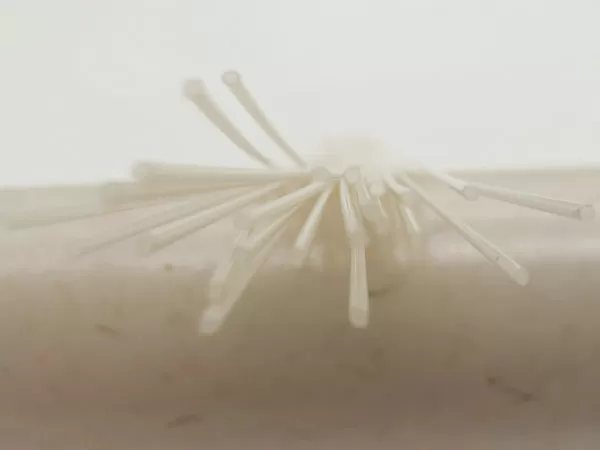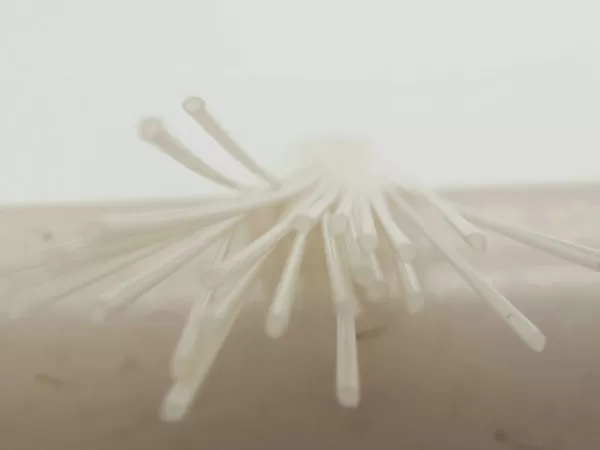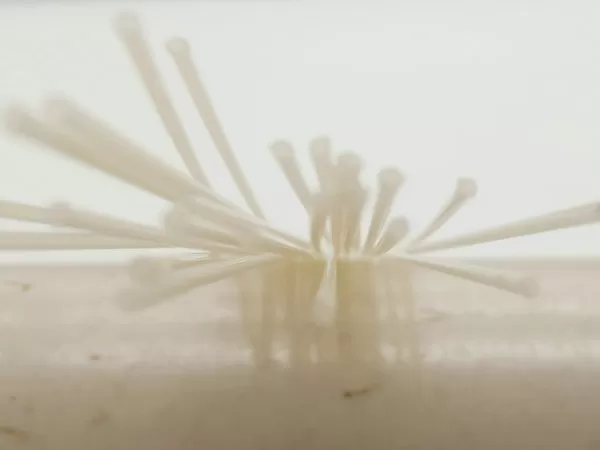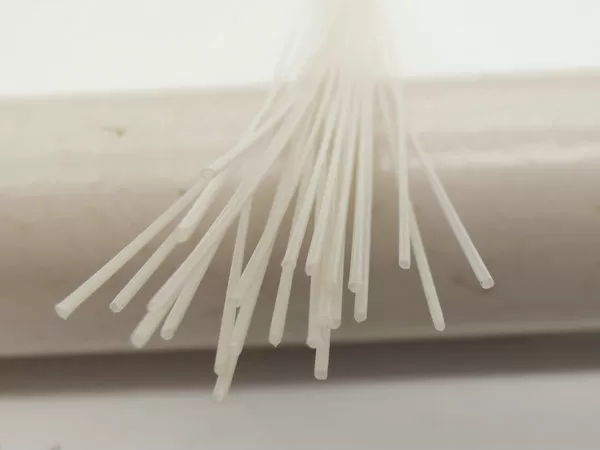Teléfono: +86 576 8880 5030
Correo electrónico: sales@peekchina.com
Desde 2008 fabricante chino de estándares PEEK
Teléfono: +86 576 8880 5030
Correo electrónico: sales@peekchina.com
Desde 2008 fabricante chino de estándares PEEK





Tubos capilares de PEEK biocompatibles
Los tubos capilares médicos de PEEK son un tipo de tubo pequeño y delgado fabricado con material de poliéter éter cetona (PEEK) diseñado específicamente para su uso en aplicaciones biomédicas. Es biocompatible, lo que significa que no causa reacciones adversas al ser implantado en el cuerpo, y se utiliza comúnmente en dispositivos médicos como catéteres e implantes. Los tubos capilares de PEEK son reconocidos por su alta resistencia, durabilidad y resistencia a productos químicos y altas temperaturas, lo que los convierte en una elección ideal para aplicaciones biomédicas donde la confiabilidad y el rendimiento son fundamentales. Con sus excelentes propiedades mecánicas y biocompatibilidad, los tubos capilares médicos de PEEK son la solución perfecta para una amplia gama de aplicaciones médicas.
Características clave de los tubos de revestimiento de PEEK:
• Material ultra duro
• Muy buena resistencia química
• Estable a temperaturas de hasta 228°C
• Excelente resistencia a la abrasión
• Retardante de llama (UL94 V-0)
• Tolerancias dimensionales muy ajustadas
Tubos de PEEK:
• En bobinas, en carretes o longitudes rectas con cortes limpios y cuadrados
• Translúcidos u opacos
• Variación en el grosor de la pared a lo largo de la longitud (tubos con protuberancias)
• Tubos de PEEK de colores
• Tubos de PEEK multicapa
• Tubos de PEEK reforzados (con cables de acero inoxidable)
• Tubos conformados
| Properties Information | ||||||
| Property | Reference Standard | Test Method | Unit | Specification | Result | |
| Physical Properties | Glass Transition | ASTM F2026 | ASTM D3418 | °C | 125-165 | 147 |
| Temperature, Tg | ||||||
| Melt Temperature, Tm | ASTM F2026 | ASTM D3418 | °C | 320-360 | 338 | |
| Recrystallization | ASTM F2026 | ASTM D3418 | °C | 260-320 | 289 | |
| Temperature, Tc | ||||||
| Viscosity | ASTM F2026 | ISO 11443 | Pa·s | 400-480 | 437 | |
| Infrared Spectrum | ASTM F2026 | ASTM F1579 | / | See Appendix X1 | See Appendix X2 | |
| Density | ASTM F2026 | ASTM D1505 | kg/m3 | 1280-1320 | 1294 | |
| Chemical Properties | Total Heavy Metals (Ag, As, Bi, Cd, Cu, Hg, Mo, Pb, Sb, and Sn), max | ASTM F2026 | US Pharmacopeia, | ppm | <100 | <10 |
| Test 233 | ||||||
| Mechanical Properties | Tensile Strength at Yield (zero slope), min | ASTM F2026 | ASTM D638, Type IV, 5.08 cm/min | MPa | 90 | 105 |
| Tensile Strength at Break, min | ASTM F2026 | ASTM D638, Type IV, 5.08 cm/min | MPa | 70 | 80 | |
| Elongation at Break, min | ASTM F2026 | ASTM D638, Type IV, 5.08 cm/min | % | 5 | 18 | |
| Flexural Strength, min | ASTM F2026 | ASTM D790 | MPa | 110 | 163 | |
| Flexural Modulus, min | ASTM F2026 | ASTM D790 | GPa | 3 | 4 | |
| Impact Strength, | ASTM F2026 | ISO 180 | kJ/m2 | 4 | 9 | |
| Notched Izod, min | ||||||
| Biological Properties | Genotoxicity | ISO 10993-3 | ISO 10993-3 | / | Negative | Negative |
| Animal Intracutaneous (Intradermal) Reactivity | ISO 10993-10 | ISO 10993-10 | / | ≤1 | 0 | |
| Skin Sensitization | ISO 10993-10 | ISO 10993-10 | / | ≤1 | 0 | |
| Acute Systemic Toxicity | ISO 10993-11 | ISO 10993-11 | / | No Acute Systemic Toxicity | No Acute Systemic Toxicity | |
| Subchronic Systemic Toxicity | ISO 10993-11 | ISO 10993-11 | / | No Subchronic Systemic Toxicity | No Subchronic Systemic Toxicity | |
| local Effects After Implantation | ISO 10993-6 | ISO10993-6 | / | No obvious difference between the test sample and the control sample | No obvious difference between the test sample and the control sample | |
| In Vitro Cytotoxicity | ISO 10993-5 | ISO10993-5 | / | ≤1 | 1 | |
| Evaluation of Haemolytic Properties | ISO 10993-4 | ISO10993-4 | % | <5 | 1 | |
| Material Mediated Pyrogens | ISO 10993-11 | ISO 10993-11 | / | No Pyrogenic Responses | No Pyrogenic Responses | |
| Extractables of The Material | ISO 10993-18 | ISO 10993-18 | μg/g | The contents of Phenyl Sulfone≤300 | The contents of Phenyl Sulfone<0.09 | |